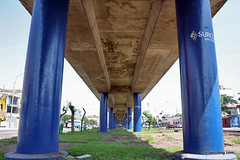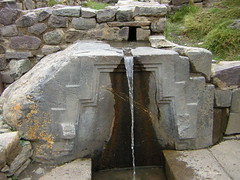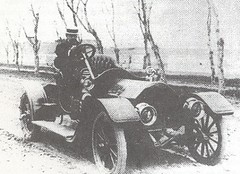The last stop – Nostalgia Street
Public transport in Lima used to be orderly, clean, efficient and safe. Bus routes ran across the city in an organised way, drivers and ticket sellers were gentlemanly and vehicles were uniform, functional and spacious. This all changed with the Presidency and quasi-dictatorship of Alberto Fujimori in the 1990s, something that the old-timers of the transport industry lament.
Based on reporting by Alberto Villar Campos
Don Manuel just remembers that at some point in the early 90s, the city suddenly rushed towards him with rage. We travelled in an old bus with creaking windows, doors and chairs, swinging around onto Avenida del Ejército from Avenida Brasil when he had just boarded minutes earlier.
“Before”, he begins to speak, “the very same driver of the bus would ask the young men to give up their seats to the women. The seats were comfortable, without graffiti and street sellers weren’t allowed to board. Now this is nothing more than a dream.”
At 82 years old, Don Manuel has lost all hope and his daily journey has become a nightmare. The tranquillity of yesteryear succumbed to the frenzy of the combi and the coaster.
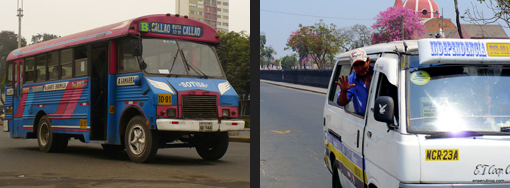
Left: A "coaster", normally called a micro. Right: A combi minivan
Lima is not what it used to be, but life goes on. The old man gets off at the next corner, near the sea and his grandchildren.
The age of orderly streets in Lima is history. 100,000 buses are waging a fierce battle through traffic at any one time, all the while the victims are not saying a word. 18 years ago life was different and today it looks like nothing wants to change.
Heart of Cocharcas
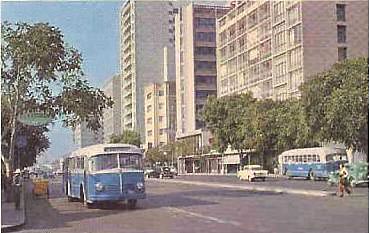
Buses in central Lima
In May of 1921, the first ten buses appeared in Lima and began a battle that saw the end of the electric tram system. Routes started in central Lima and ran out to Barranco, Miraflores, Magdalena and Callao. During this time the city was home to only 300,000 inhabitants.
A 26 seater Dodge 300 driven by Alberto Barrientes is one of the few buses continuing to ferrying passengers across the city for a famous and ageing bus company called the Cocharcas. Founded in the 30s, it has so far survived, albeit in a wounded state.
Surrounding Alberto’s vehicle are coasters, and if he wants to stay in business, he too will so have to buy one. “Our route used to go from Puente Piedra to El Agustino until we passed the church of Our Lady of Cocharcas in central Lima. We used to have 180 buses, but now we just have 50″, he explains.
Theirs is a sad story. Since work began on the Vía Expresa, seven of the ten companies that served it had to buy combis to cover other routes and stay in business. David Quintana of the Drivers Federation of Peru complains the problem, “Since the start, our capital was developed in parts and never in an integrated way.”
Alive, despite the combis
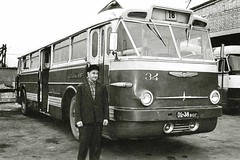
Ikarus bus
The old Ikarus buses that ploughed the streets of Lima in the 70s and their operators were synonymous with punctuality and the respect shown to passengers. When the coasters and combis arrived – in 1991 during the Fujimori government – this all ended. “The collapses of the system accentuated unpunctuality and broke rules of respect and consideration for others”, explains sociologist Aldo Panfichi with regards to traffic and society in Lima.
The Ariza brothers, Victor and Carlos, have been driving buses on route 73 for 15 years for the Etupsa company. Unlike other drivers, both enjoy and are happy in their jobs, because despite the hellish conditions they must overcome day after day on their long route from Callao to Pachacamac, they – just as Barrientos – still retain the spirit of a bygone era. Respect for the passengers no matter what and consideration for others despite everything.
Tags: 1920s, 1950s, 1990s, combis, fujimori, lima, streets, traffic, trams, transport




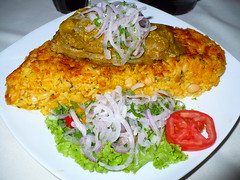
![Food business taking off in Peru [Featured]](http://farm3.static.flickr.com/2461/3616418081_a058a9f62e_m.jpg)
